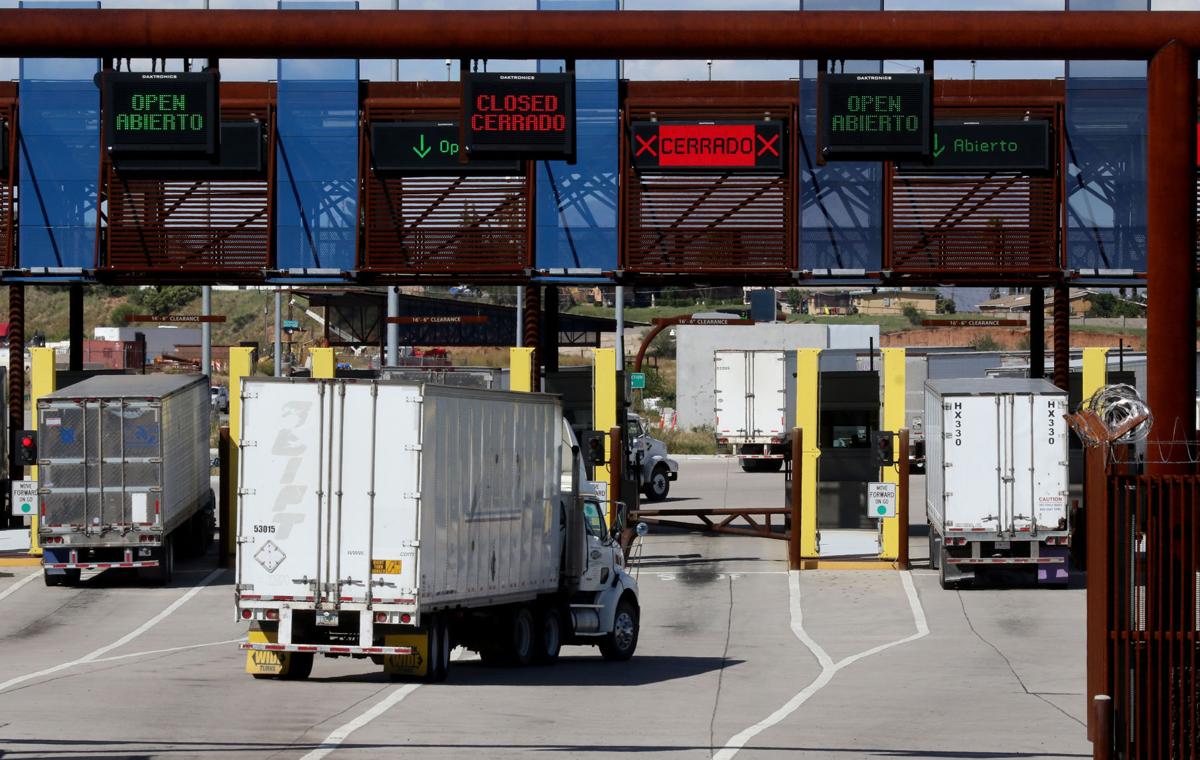More overweight trucks may soon barrel down certain Southern Arizona roadways.
A pilot program that started Sept. 1 allows permitting of some trucks weighing up to 83,000 pounds on Interstate 19 from Nogales to Tucson, Business Loop 19 in Nogales, Arizona 189 and Interstate 10 between mileposts 232 and 279, roughly between Marana and Vail.
The number of trucks in the yearlong pilot program hasn’t yet been determined, said Steve Elliot, assistant communications director for the Arizona Department of Transportation.
Some overweight trucks already are on our freeways — commercial trucks that weigh up to 90,800 pounds can get exemptions that let them haul produce from Mexico to warehouses within 25 miles of the border. But those special permits are granted on an individual basis.
Truckers that qualify for overweight permits under the pilot program will not have to seek permission again and again as long as they stay at 83,000 pounds or less.
Critics of the pilot program worry that it will endanger noncommercial vehicles sharing the highways with the heavy trucks.
“You have a motor vehicle driver going to visit family in Nogales and here comes a 90,000-pound truck,” said Harold English of E&E Business Solutions in Tucson. The car “might not have the mindset to stay away or not pull out in front of that truck.”
Don Weaver, president of the Green Valley Council and a retired civil engineer, said two things need to be considered: how long it takes the heavier trucks to stop and whether Southern Arizona roads can handle the heavier weight without deteriorating rapidly.
But Mike Valencia, president of the Southern Arizona Logistics Education Organization, said there are already overweight trucks on the road and that safety is a concern for everyone.
“We run anywhere from 5 to 10 miles under the speed limit precisely because of that, to be able to manage our speed, manage our distance and manage our route,” he said.
“A distinct advantage”
Truck weights are usually capped at 80,000 pounds.
An extra 3,000 may not sound like much, but it will make an immediate difference to companies that ship via rail through the Port of Tucson, Valencia said.
A 52,000-pound container, when added to the weight of the tractor and chassis, reaches the 83,000-pound limit.
“It gives us a distinct advantage of being able to ship heavier. Everyone wants to take advantage of the legal limit on the rail because that’s what they’re paying for, they’re paying for 52,000 pounds,” Valencia said.
Maquiladoras in Mexico that now get supplies from the Port of Long Beach could ship via rail, pick it up at the Port of Tucson and truck it down to Nogales. That would be cheaper than trucking it directly from California, officials said.
Businesses shipping in from Mexico could also load heavier trucks directly to Tucson — and, eventually, to the rest of the state.
“For Arizona to be competitive in the world economy you have to look at transportation costs,” said Alan Levin, owner of the Port of Tucson. “Anything you can do to lower those costs makes business in Arizona and Southern Arizona more competitive.”
The Southern Arizona Logistics Education Organization, the Port of Tucson and other stakeholders in the region have been working for about four years to get a volume overweight permitting system, Valencia said.
ADOT began studying the issue in June 2015 and expects to have a preliminary report by the end of the year, with a final report by 2017. The study should produce recommendations on overweight limits, permit costs and transit areas, officials said.
An overweight border permit program, implemented in 2011 in Nogales and 2014 in San Luis, already allows commercial trucks up to 90,800 pounds to transport produce from Mexico to be off-loaded in warehouses within 25 miles of the border.
ADOT has not received any safety complaints, department spokesman Elliot said.
20 states already on board
Along with safety issues, there are also questions about who benefits economically from the overweight trucks pilot program, said Tony Bradley, president of the Arizona Trucking Association.
Now, when a 90,800-pound truck full of produce comes across the border, it goes to a warehouse in Nogales where it’s broken down and put on 80,000-pound trucks headed toward their destination in the United States, he said.
“If you increase the weight from Nogales to Tucson, all you do in that circumstance is possibly remove jobs from Nogales and put them in Tucson,” Bradley said. “So if you want to talk regionally, you’re hurting your partner Nogales and displacing those jobs.”
Proponents say changing the overweight permitting system will benefit the state as a whole.
“On a global scale, this gives us a tremendous advantage over other places,” Valencia said. “When companies look for settling, resettling or transit points, they look for things like this. Are you able to ship overweight? Do you have transit corridors?”
Levine, of the Port of Tucson, said more than 20 states already have overweight or heavyweight corridors. If Arizona doesn’t take advantage, he said, another state will.
“When you look at Texas, they have been very aggressive on transportation and border crossings,” he said. “This is an opportunity we need to look at, evaluate and make a decision.”





